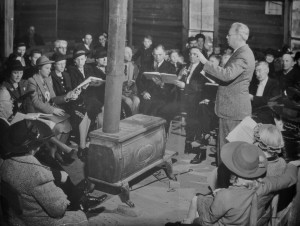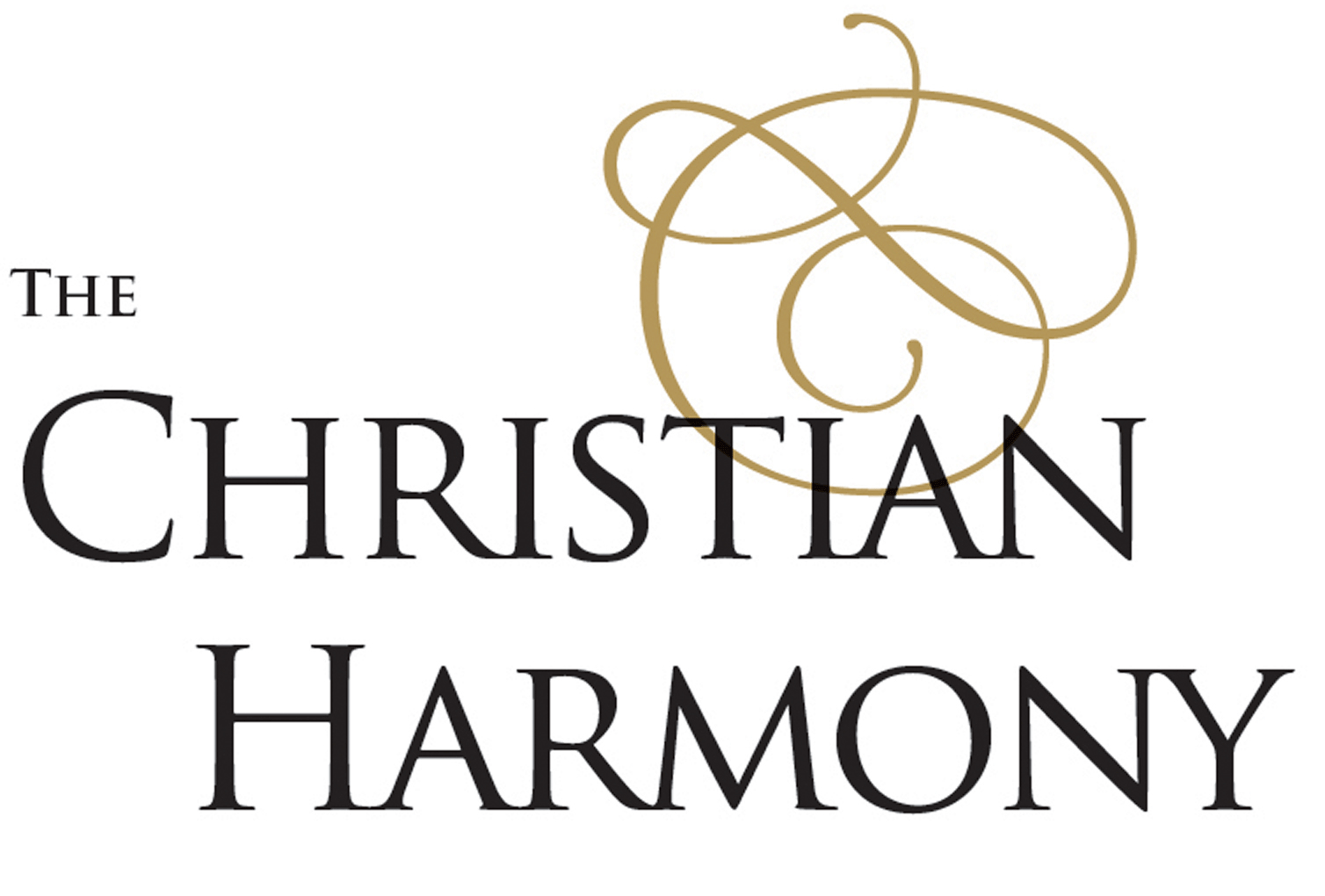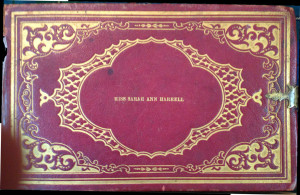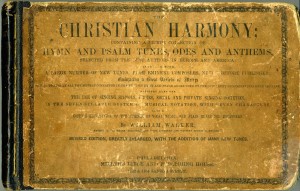Front Matter/Rudiments From 2015 Facsimile Edition of The Christian Harmony (download here)
Shaped-Note Music
-- What’s That?
So just what is shaped-note music? It is a system of music notation that makes sight-reading accessible to those who might otherwise be intimidated by regular music. Each degree of the standard musical scale is assigned a different name and shape, making it only necessary to memorize the shapes and the intervals they represent. This makes it possible to easily sing and read music in any key. (Think Julie Andrews and the “Do-Re-Mi” song in The Sound of Music.)
Traditional sh aped-note singing is usually sung in a “key of convenience,” with each tune set by a leader at a pitch that is (usually) comfortable to all present. While local customs vary, the old singing school model is often followed: singers sit in a hollow square with the lead singers facing the altos and the treble singers facing the bass section; leaders rotate with each in turn leading their song(s) of choice; and minutes are kept. For each song there’s a practice round, singing first the syllables (do-re-mi . . . , for example) and then the poetry.
aped-note singing is usually sung in a “key of convenience,” with each tune set by a leader at a pitch that is (usually) comfortable to all present. While local customs vary, the old singing school model is often followed: singers sit in a hollow square with the lead singers facing the altos and the treble singers facing the bass section; leaders rotate with each in turn leading their song(s) of choice; and minutes are kept. For each song there’s a practice round, singing first the syllables (do-re-mi . . . , for example) and then the poetry.
While the music on the page, and in the rudiments section of many songbooks, sometimes include instructions on the dynamics of singing (loud, soft, crescendo, etc.), traditional singers, in full-voiced enthusiasm, often choose to breeze right by them. The music can be loud -- and powerful.
Except for the shape of the note heads, shape-note written music has the same basic appearance as regular music notation. For the most part, books with historic roots have a separate staff for each vocal part with the staves designated, from bottom to top, as Bass, Tenor, Alto and Treble. The alto line was often omitted in earlier books with the lower women’s voices doubling the Bass line. The Tenor line (second from the bottom) is the lead or melody line.
There are two major systems of shaped notation: the more historic four-shape system (The scale being sung Fa-Sol-La- Fa-Sol-La-Mi-Fa) exemplified by White and King’s The Sacred Harp; and the seven-shape system (Do-Re-Mi-Fa-Sol-La-Si-Do)
exemplified by White and King’s The Sacred Harp; and the seven-shape system (Do-Re-Mi-Fa-Sol-La-Si-Do)  exemplified by William Walker’s The Christian Harmony and many other books dating from the mid-19th century forward.
exemplified by William Walker’s The Christian Harmony and many other books dating from the mid-19th century forward. Jesse Aikin first used his seven-shape note heads in his 1846 The Christian Minstrel, adding, and patenting, new shapes for the first (Doe), second (Ray) and seventh (See) degrees of the musical scale to the previously used, (and unpatented) shapes (Mee-Faw-Sole-Law).
Jesse Aikin first used his seven-shape note heads in his 1846 The Christian Minstrel, adding, and patenting, new shapes for the first (Doe), second (Ray) and seventh (See) degrees of the musical scale to the previously used, (and unpatented) shapes (Mee-Faw-Sole-Law). Later seven-shape authors, including Walker and M.L Swan,
Later seven-shape authors, including Walker and M.L Swan,  used different shapes to avoid infringing upon Aikin’s vigorously defended patent. While the use of the syllable Ti (tee) for the seventh degree of the scale is often seen, Aiken, Walker and Swan used Si (see).
used different shapes to avoid infringing upon Aikin’s vigorously defended patent. While the use of the syllable Ti (tee) for the seventh degree of the scale is often seen, Aiken, Walker and Swan used Si (see).





